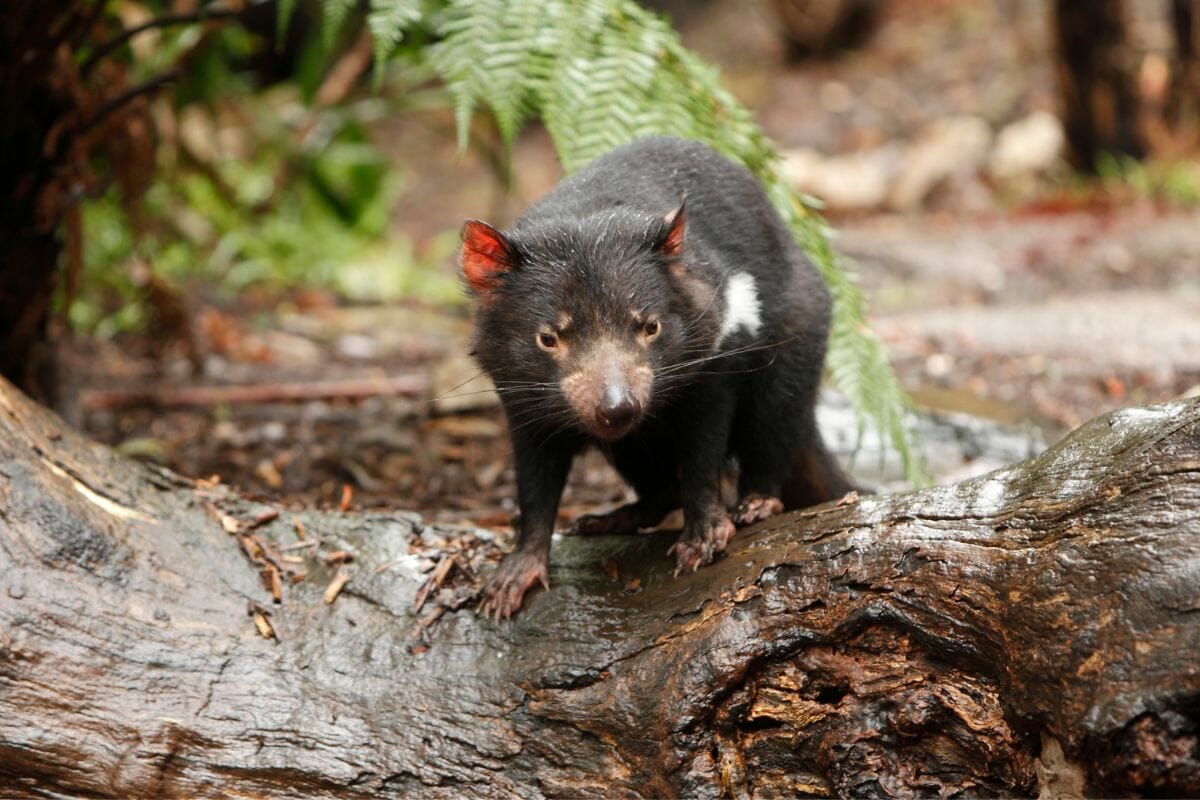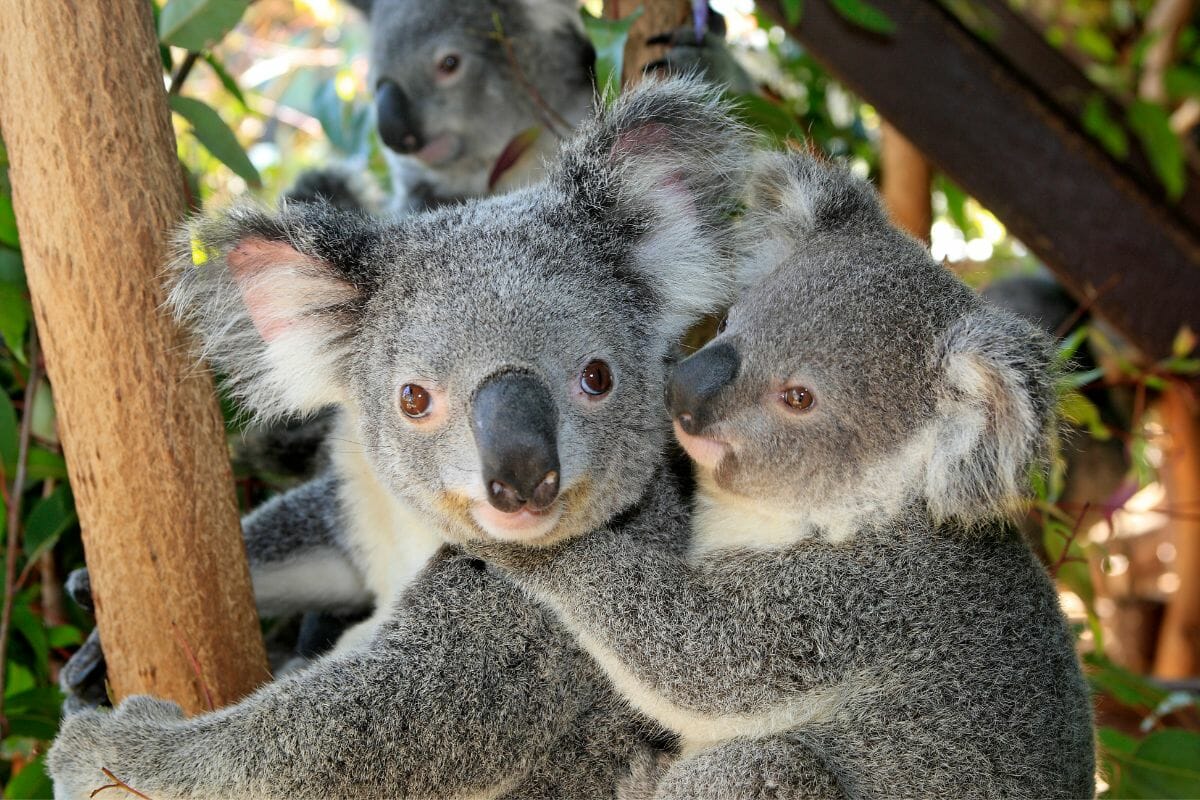Marsupials are some of the most interesting and beloved creatures on Earth, but what exactly are they, and where do they originate from?

Many people are familiar with numerous species of marsupials without even knowing what they are, so to find out that these animals aren’t regular mammals can be quite a shock, and it also leaves people curious as to what the history is behind them!
If you’re looking for an explanation of the history and evolution of marsupials then look no further, as we’ll cover everything you need to know about these incredible creatures.
So, if you want to know more about these animals, (see also: 10 White Animals You Should Know Of)then read on, as we’ll teach you everything there is to know about marsupials!
What Is A Marsupial?
Before we can begin learning about their history, it’s first important to establish what exactly a marsupial is, as it will allow us to have a better understanding of what a marsupial is before we can take a look at how they’ve evolved.
Belonging to the infraclass Metatheria (which is sometimes known as Marsupialia), marsupials are a type of mammal with over 250 different species, these mammals are different from other mammals due to the characteristic of premature birth, where the newborn then continues its growth and development by attaching itself to the nipples of its mother, which are always located on the lower belly.
Despite not being a wholly universal characteristic of marsupials, many marsupial animals have a marsupium, which is a pouch, in order to carry their young as they feed from the mother.
Whilst there are a large number of marsupials out there, some of the more notable examples include Koalas, Wombats, Wallabies, Kangaroos, Opossums, (see also: How Many Teeth Do Opossums Have?)and Tasmanian Devils.
Typically characterized as living in Australia, marsupials can also be found in countries such as New Guinea and New Zealand (see also: The Waitoreke Of New Zealand – Marsupial or Monotreme?)too, although there are also around 70 species of marsupials that live in the Americas too, notably Central and South America.
History And Origin Of Marsupials

Evidence demonstrates that marsupials originated in the New World, with many of the oldest marsupial fossils being found in North America and China, with the oldest one dating back 125 million years ago, to the Cretaceous Period, which was between 145 to 66 million years ago.
It is thought that their presence in both Australia and the islands which surround it was a result of a singular migration event, where ancestral marsupials were able to make their way over to Australia by using the land connections between South America and Antarctica, although it still remains a subject of debate whether or not this took place before the prominence of Placental Mammals, or whether Australasia had previously been inhabited by Placental Mammals and then died out prior to the arrival of marsupials.
The isolation of Australasia roughly 65 million years ago meant that many marsupials began to undergo various different forms of evolution, diversifying the number of species further, whilst they also formed part of the Neotropical mammalian fauna alongside placentals in South America.
Other than this, marsupials were also known to inhabit parts of Asia, North Africa, and Europe 125 to 14 million years ago too.
Another disputed subject is whether the widespread hunting and burning of Australia’s landscape are what lead to the extinction of many of the megafauna during the Pleistocene Epoch some 50 to 45 thousand years ago.
Marsupials made their way to many of the islands surrounding Australia, such as New Zealand, purely through human agency.
The colonization of Australia by the British in the early 19th century meant the introduction of different forms of trapping, hunting, and land-clearing, as well as the introduction of cats, dogs, and foxes to the ecosystem, which lead for a number of species of bandicoots and kangaroos to go extinct, as well as nearly driving animals such as the Tasmanian devil and koalas to extinction too.
Marsupial Classification
Along with mammals, marsupials also share the presence of mammary glands and hair.
However, they differ when looking at the female reproductive tract, as marsupial females actually have twin vaginae which then opens into one common cavity, which is known as the urogenital sinus, with this cavity then emptying itself into a short cloaca, which is shared between the cavity and the intestinal tract.
On the other hand, the defining characteristic of male marsupials is that the testes are in front of the penis.
Other defining characteristics of marsupials include specific skull patterns, large fenestrae (jaw openings) in the palate, and gonial inflection around the jaw which then forms a shelf.
There are also differences in both the teeth and the arrangement of toes too. Otherwise, the body systems of most marsupials are nearly identical to that of placentals.
Marsupial Life Cycle

Although the life cycle of marsupials is widely considered to be more primitive in comparison to that of placental mammals, it is worth noting that this is likely a form of adaptation to the low-productivity environments in which so many marsupials inhabit.
For example, female marsupials’ uterine wall is in no way specialized for embryo implantation, nor does the uterine cycle have a secretory phase either.
Newborn marsupials are also born in a rather vulnerable embryonic state, and must find their way to the warmth, protection, and nourishment found in the pouch of their mother in order to continue developing and growing, which they do by feeding off of the teats of their mother.
These young then remain in the pouch sometimes for weeks, often for months, before they begin to be weaned and start fending for themselves.
It is common for the number of young to exceed the amount of teats the mother has, in which case the excess young are simply left to die.
Marsupial Diet
The diet of many marsupials includes an often varied selection of sources of nutrition, (see also: What Do I Feed My Pet Bandicoot? (Diet & Nutrition Guide))with many marsupials consuming a mix of insects, plants, and sometimes smaller animals in order to provide them with the energy they need to survive.
There are some select exceptions however, for example, the small honey possum has adapted to survive and feed off of the nectar from flowers, which also makes it a key pollinator too.
There are very few larger marsupials which are carnivores that managed to evolve, which is because of the nature of the low-productivity environment in which they inhabit.
Although there is the Tasmanian Devil, and previously the extinct Tasmanian Wolf, both of these animals were forced off the mainland due to the increasing presence of Dingos.
Conclusion
As you can see, marsupials have a rich and complex history, which is what makes them such fascinating creatures to learn about, and many of the world’s most beloved creatures are marsupials, which is why so many people are keen to learn more about them!
We hope you’ve enjoyed learning more about the marsupials, including their origins, evolution, and the key characteristics of these creatures, thank you for reading!









